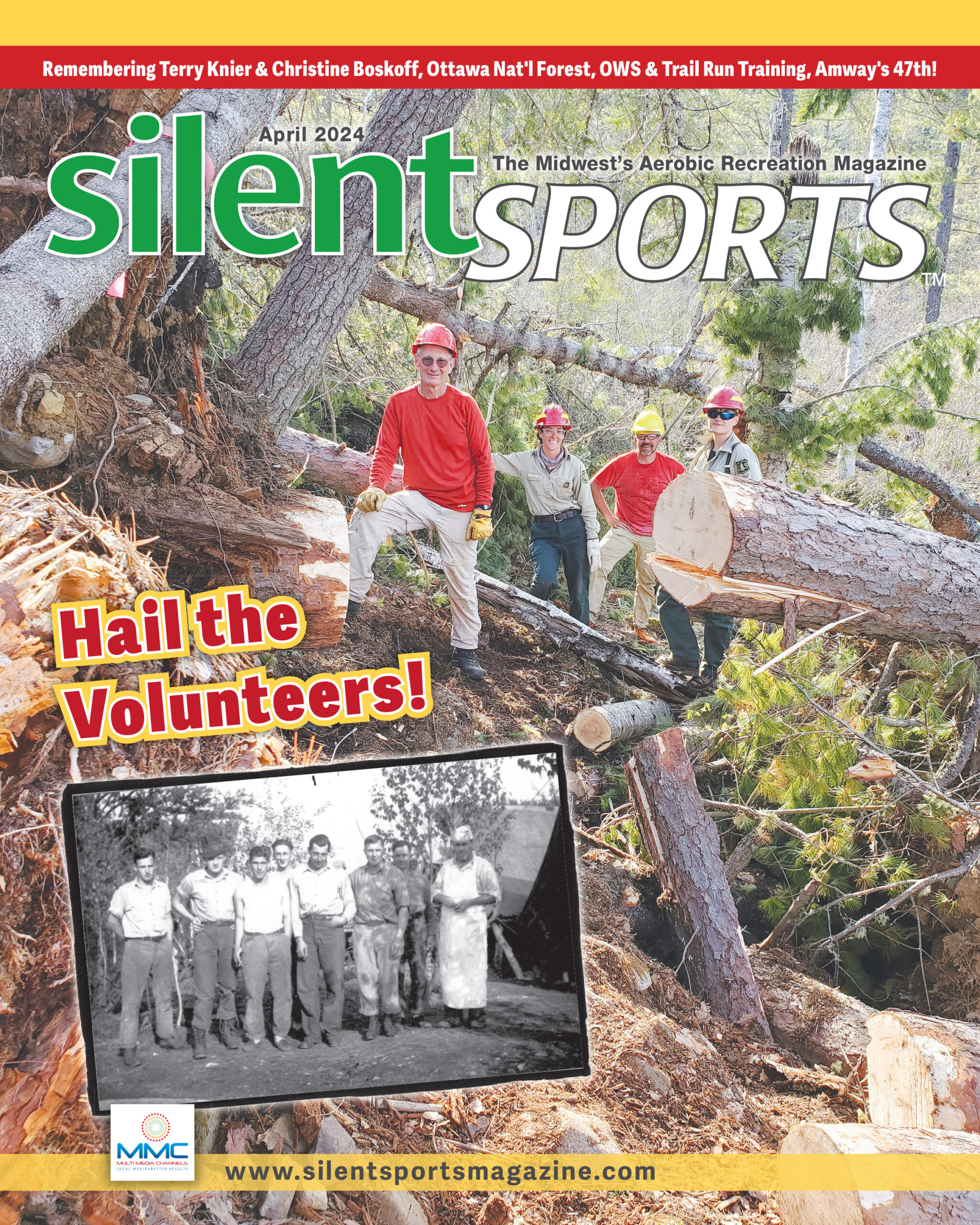Real trail runners like it dirty
During a long trail run in April, I made my way to Nelson Lake Woods, a large preserve in Batavia, Illinois, that is rich with lakes, woods, prairie and crushed limestone, grass and wood chip trails. A runner ahead of me turned right at a T intersection on the limestone trail, as I would when I got there. The runner then stopped to do some lunge exercises and I passed him, exchanging nods.
Two hundred or so yards later, a broad swath of water covering at least 30 yards of trail ahead and 30 to 50 yards into the fields on both sides. The land beyond that looked like the La Brea Tar Pits. I could not begin to guess the water’s depth or temperature. The air was about 38 degrees.
There were other trails to take, so I did what I thought was the logical thing to do: I turned around. On my way back to the T intersection, the other runner approached. To save him the trouble, I warned him. “There’s a huge expanse of water over the trail and fields up ahead,” I said. In response, he smiled and said, “Looking forward to it!”
His sounded self-assured but not cocky. And his pace did not slow one bit. He went on. I went on, too, but in the other direction.
Suddenly logic felt like retreat. Sensible behavior seemed more like cowardice. What kind of trail runner was I to let a mere puddle (or rather an ice-cold lake of unknown depth guaranteed to soak my socks, shoes, running tights and skin with still eight miles to go on a 38-degree day) turn me around?
That other guy? He was a true trail runner. Me? Not so much.
I thought about turning around, to regain my dignity. But if I did that, wouldn’t I come off like a lemming, returning to run through that water only because I followed? Both a coward and a follower?
I kept going along the dry limestone trail – the safe trail, the trail with fewer hills – hoping for more flood waters around the next turn. But it was nothing but dry, flat and safe the whole way. It was horrible.
I looked off to the west, to the trail the other runner took. That brave runner. The true trail runner. But I could not see him. That meant that not only had he taken the limestone path through the flood, but he had also taken a connecting grass trail farther west where there would be more swaths of water and plenty of stretches of muddy slip-and-slides to manage. My pride trash-compacted under the force of trail-runner jealousy.
The wimpy trail I ran eventually converged with the heroic trail and headed south to a bridge covering a creek I hoped had overflowed its banks. Alas, although the creek flowed high at its banks, there was no overflow. No puddles. No mud. Safe and dry. A huge letdown.
The lowest section around Nelson Lake at most squished beneath my steps. So disappointing. That was it. My last chance for redemption, gone. Up and up the trail rose, so negligibly, so unnoticeably. So unchallengingly. A flat section, another puff of an uphill …
And there it was! A normally high and dry section, the ground drainage pipes had washed out. I don’t know why. I supposed I should have cared why. But at the time what I looked at was 20 yards of running water over the trail, fallen and rotting tree trunks, water-flow-gouged trenches of varying depths, perhaps up to two-feet deep. In other words, redemption.
The sensible thing, other than turning around, was to stop, investigate the situation and chart my course before going forward. I would have none of that. Instead, I rushed in. Hopping a couple logs, landing in icy water to mid-calf, splashing to mid-thigh, slipping in mud that sent me skidding several feet and half falling, enough to muddy my lower legs, hands and a forearm. It was wonderful vindication.
For the rest of my run on the Nelson Lake Trail that day, I encountered no more water, mudslides or fallen logs to leap in, through or over. All that remained of my moment of glory was the Herman Munster gloppings of mud stuck to my shoes; a memento of trail running self-righteousness.
The final three miles of that run was on asphalt. After climbing two modest hills, I was led back to the rec center. By the time I returned to the lobby, the Herman Munster mud had fallen off my shoes and the coating over my running tights had dried and was camouflaged by the black material. All that remained of the evidence proving my trail-running redemption was the mud on one of my arms and the hint of a squish when I took a step in my right shoe. Nobody seemed to notice or care. Nobody had the decency to question my sanity.
There was vindication, yes, but I was alone when it happened. As a trail runner, I remained the tree that had slopped through ice-cold water and mud in the forest, and no one was there to hear or see. Even worse was the thought that somewhere still out there was the other trail runner who witnessed my cowardly retreat from the first puddle.
From now on, and forever more, I know, that when facing an ice-cold, unknown depth of water flooding a trail, I must stomp through, making as big a splash as possible.
It’s the only logical thing to do, especially when someone else is watching.
Bruce Steinberg is a father, husband, lawyer, novelist and silent sports enthusiast in St. Charles, Illinois.

